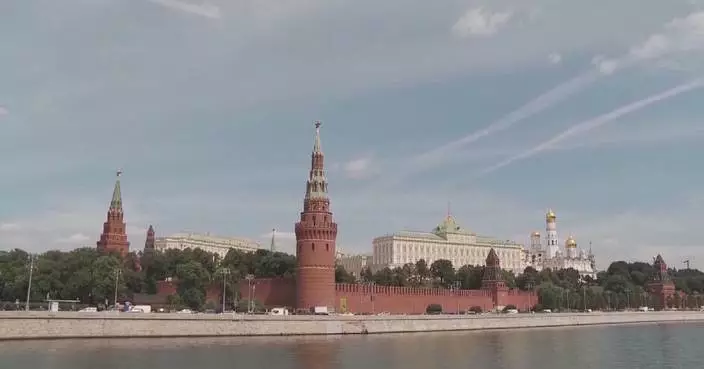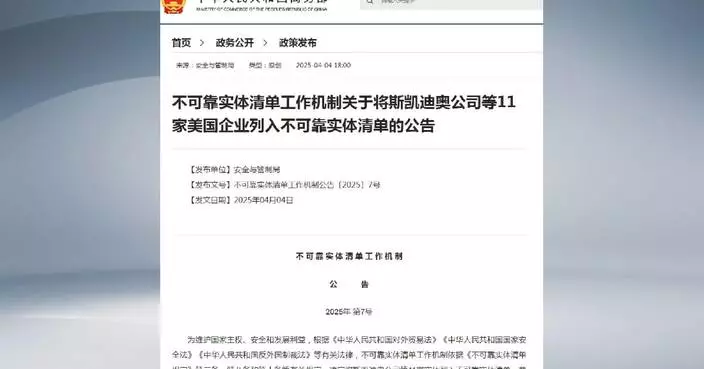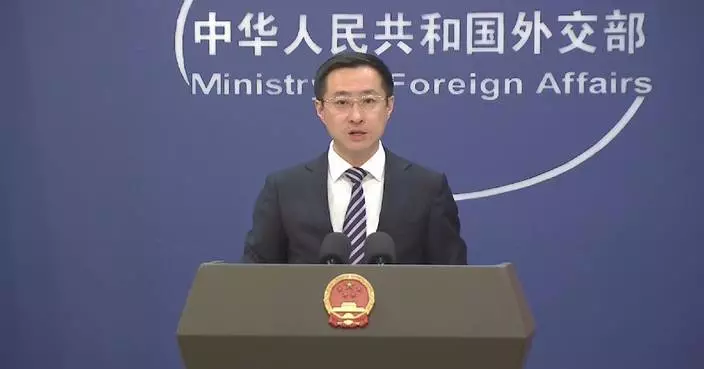DENVER (AP) — Colorado’s Democrat governor said Thursday that he is providing state aircraft and vehicles to help with changing voting system passwords that were accidentally leaked on a state website.
The mistake comes amid skepticism of voting systems, even though U.S. election nationwide remain fair and reliable.
The passwords were left on a spreadsheet online for months, Colorado Secretary of State Jena Griswold announced on Tuesday. Now, local, state and federal agencies are working together to change the passwords by Thursday evening, and analyze logs to ensure there hasn’t been any tampering.
The Colorado County Clerks Association said in a statement that because Colorado's voting systems have layers of safeguards, and with the remediation plan already in motion, “county clerks can say with confidence that Colorado elections are secure."
Former President Donald Trump’s campaign sent a letter to Griswold to express concern, which followed a similar letter from the chairman of the Colorado GOP. Griswold responded in a letter Thursday evening, saying that because of the many security levels, “no single error can compromise the integrity of the system,” and reiterated that the leak presents “no immediate threat.”
Griswold has called Colorado the gold standard for election security, though the leaked spreadsheet follows a hiccup in 2022.
Colorado's other voting security measures include around-the-clock surveillance, badge-guarded access, and multiple passwords that must be used in-person and in secured areas — the access to which is tracked. Colorado voters fill out paper ballots, which are audited after the election.
The voting system was "built with many layers of security to protect against just this type of occurrence,” said Matt Crane, the association's executive director and a former Republican county clerk. “Every clerk is taking this issue seriously and is staying laser-focused on delivering the safe and accurate elections that Coloradans have come to expect from us."
Those tasked with changing the compromised passwords are working in pairs, under direct observation from local election officials, according to a statement from Colorado Gov. Jared Polis’ office.
“We want to be able to provide assurances that all votes are counted fairly and accurately for this election and all elections,” Polis said.
“Colorado has countless layers of security to ensure voter’s voices are heard. I’m thankful to the governor for his support to quickly resolve this unfortunate mistake,” Griswold said.

Stickers for voters sit in a roll on a ballot box at a voting drop-off location Friday, Oct. 25, 2024, in Washington Park in Denver. (AP Photo/David Zalubowski)
President Donald Trump’s administration released a lengthy review of transgender health care on Thursday that advocates for a greater reliance on behavioral therapy rather than broad gender-affirming medical care for youths with gender dysphoria.
The 409-page Health and Human Services report questions standards for the treatment of transgender youth issued by the World Professional Association for Transgender Health and is likely to be used to bolster the government’s abrupt shift in how to care for a subset of the population that has become a political lightning rod.
Major medical groups and those who treat transgender young people sharply criticized the new report as inaccurate.
This “best practices” report is in response to an executive order Trump issued days into his second term that says the federal government must not support gender transitions for anyone under age 19.
“Our duty is to protect our nation’s children — not expose them to unproven and irreversible medical interventions,” National Institutes of Health Director Dr. Jay Bhattacharya said in a statement. “We must follow the gold standard of science, not activist agendas.”
The report questions the ethics of medical interventions for transgender young people, suggesting that adolescents are too young to give consent to life-changing treatments that could result in future infertility. It also cites and echoes a report in England that reinforced a decision by its public health services to stop prescribing puberty blockers outside of research settings.
The report accuses transgender care specialists of disregarding psychotherapy that might challenge preconceptions, partly because of a “mischaracterization of such approaches as ‘conversion therapy,’” which about half the states have banned for minors.
The American Academy of Child & Adolescent Psychiatry has said evidence shows conversion therapies inflict harm on young people, including elevated rates of suicidal thoughts.
HHS said its report does not address treatment for adults, is not clinical guidance and does not make any policy recommendations. However, it also says the review “is intended for policymakers, clinicians, therapists, medical organizations, and importantly, patients and their families,” and it declares that medical professionals involved in transgender care have failed their young patients.
The report could create fear for families seeking care and for medical providers, said Shannon Minter, the legal director at the National Center for Lesbian Rights. “It’s very chilling to see the federal government injecting politics and ideology into medical science,” Minter said.
“It’s Orwellian. It is designed to confuse and disorient,” Minter added.
Child and adolescent psychiatrist Dr. Scott Leibowitz, a co-author of the influential WPATH standards for youth, said the new report “legitimizes the harmful idea that providers should approach young people with the notion that alignment between sex and gender is preferred, instead of approaching the treatment frame in a neutral manner.”
While Health Secretary Robert F. Kennedy Jr. has repeatedly pledged to practice “radical transparency,” his department did not release any information about who authored the study. The administration says the new report will go through a peer-review process and will only say who contributed to the report after “in order to help maintain the integrity of this process.”
The report contradicts American Medical Association guidance, which urges states not to ban gender-affirming care for minors, saying that “empirical evidence has demonstrated that trans and non-binary gender identities are normal variations of human identity and expression.”
It also was prepared without input from the American Academy of Pediatrics, according to its president, Dr. Susan Kressly.
“This report misrepresents the current medical consensus and fails to reflect the realities of pediatric care,” Kressly said. She said the AAP was not consulted “yet our policy and intentions behind our recommendations were cited throughout in inaccurate and misleading ways.”
Dr. Jack Drescher, a New York psychiatrist and psychoanalyst who works on sexual orientation and gender identity issues, said the report is one-sided and “magnifies the risks of treatments while minimizing benefits.”
The Trump administration’s report says “many” U.S. adolescents who are transgender or are questioning their gender identity have received surgeries or medications. In fact, such treatments remain rare as a portion of the population. Fewer than 1 in 1,000 adolescents in the U.S. received gender-affirming medication — puberty blockers or hormones — according to a five-year study of those on commercial insurance released this year. About 1,200 patients underwent gender-affirming surgeries in one recent year, according to another study.
Gender-affirming care for transgender youth under standards widely used in the U.S. includes developing a plan with medical experts and family members that includes supportive talk therapy and can — but does not always — involve puberty blockers or hormone treatment. Many U.S. adolescents with gender dysphoria may decide not to proceed with medications or surgeries.
Jamie Bruesehoff, a New Jersey mom, said her 18-year-old daughter, who was assigned male at birth, identified with girls as soon as she could talk. She began using a female name and pronouns at 8 and received puberty blockers at 11 before eventually beginning estrogen therapy.
“She is thriving by every definition of the word,” said Bruesehoff, who wrote a book on parenting gender-diverse children. “All of that is because she had access to this support from her family and community and access to evidence-based gender-affirming health care when it was appropriate.”
A judge has blocked key parts of Trump’s order, which includes denying research and educational grants for medical schools, hospitals and other institutions that provide gender-affirming care to people 18 or younger. Several hospitals around the country ceased providing care. The White House said Monday that since Trump took office, HHS has eliminated 215 grants totaling $477 million for research or education on gender-affirming treatment.
Most Republican-controlled states have also adopted bans or restrictions on gender-affirming care. A U.S. Supreme Court ruling is pending after justices heard arguments in December in a case about whether states can enforce such laws.
The Jan. 28 executive order is among several administration policies aimed at denying the existence of transgender people. Trump also has ordered the government to identify people as either male or female rather than accept a concept of gender in which people fall along a spectrum, remove transgender service members from the military, and bar transgender women and girls from sports competitions that align with their gender. This month, HHS issued guidance to protect whistleblowers who report doctors or hospitals providing gender-affirming care. Judges are blocking enforcement of several of the policies.
This latest HHS report, which Trump called for while campaigning last year, represents a reversal in federal policy. The U.S. Substance Abuse and Mental Health Services Administration, which is part of HHS, found that no research had determined that behavioral health interventions could change someone’s gender identity or sexual orientation. The 2023 update to the 2015 finding is no longer on the agency’s website.

FILE - Health and Human Services Secretary Robert F. Kennedy Jr. speaks at the Rx and Illicit drug Summit, April 24, 2025, in Nashville, Tenn. (AP Photo/George Walker IV, File)

FILE - Children hold signs and transgender pride flags as supporters of transgender rights rally by the Supreme Court, Dec. 4, 2024, in Washington. (AP Photo/Jacquelyn Martin, File)

File - Supporters of transgender rights rally by the Supreme Court, Dec. 4, 2024, in Washington. (AP Photo/Jacquelyn Martin, File)

FILE - President Donald Trump holds up an executive order after signing it at an indoor Presidential Inauguration parade event in Washington, Jan. 20, 2025. (AP Photo/Matt Rourke, File)
























































